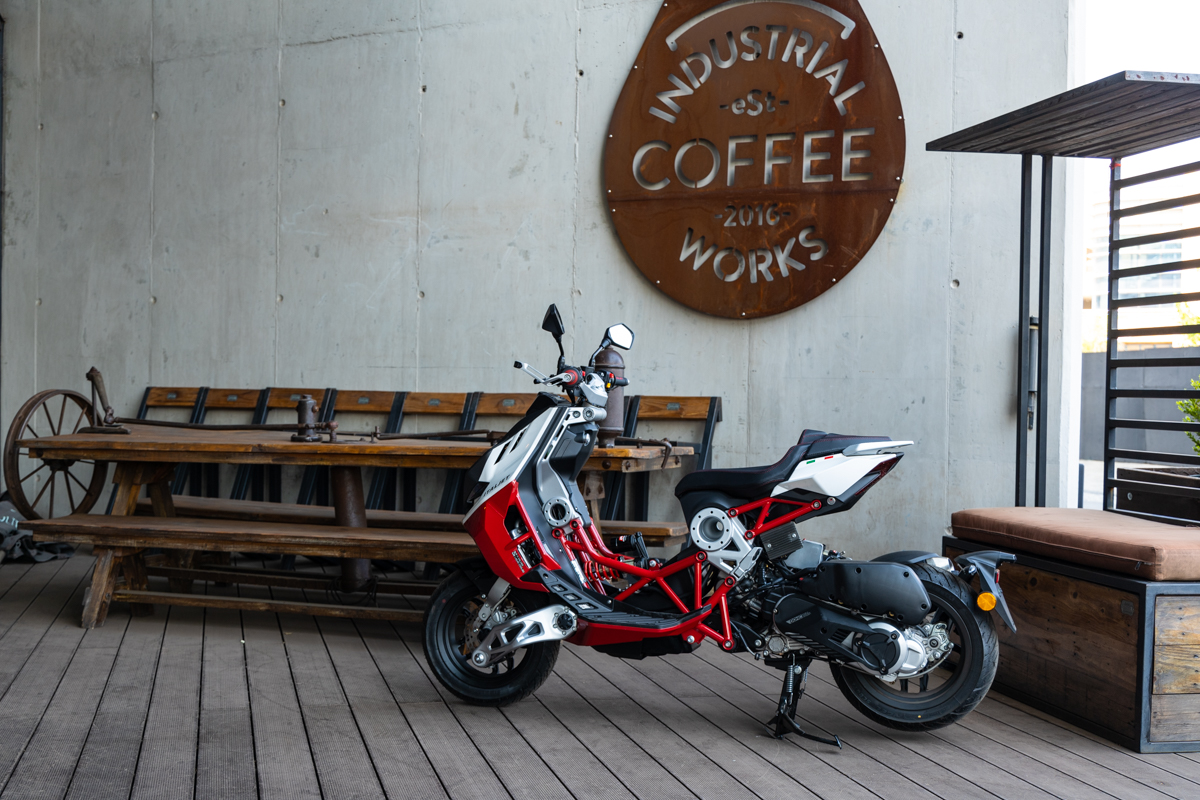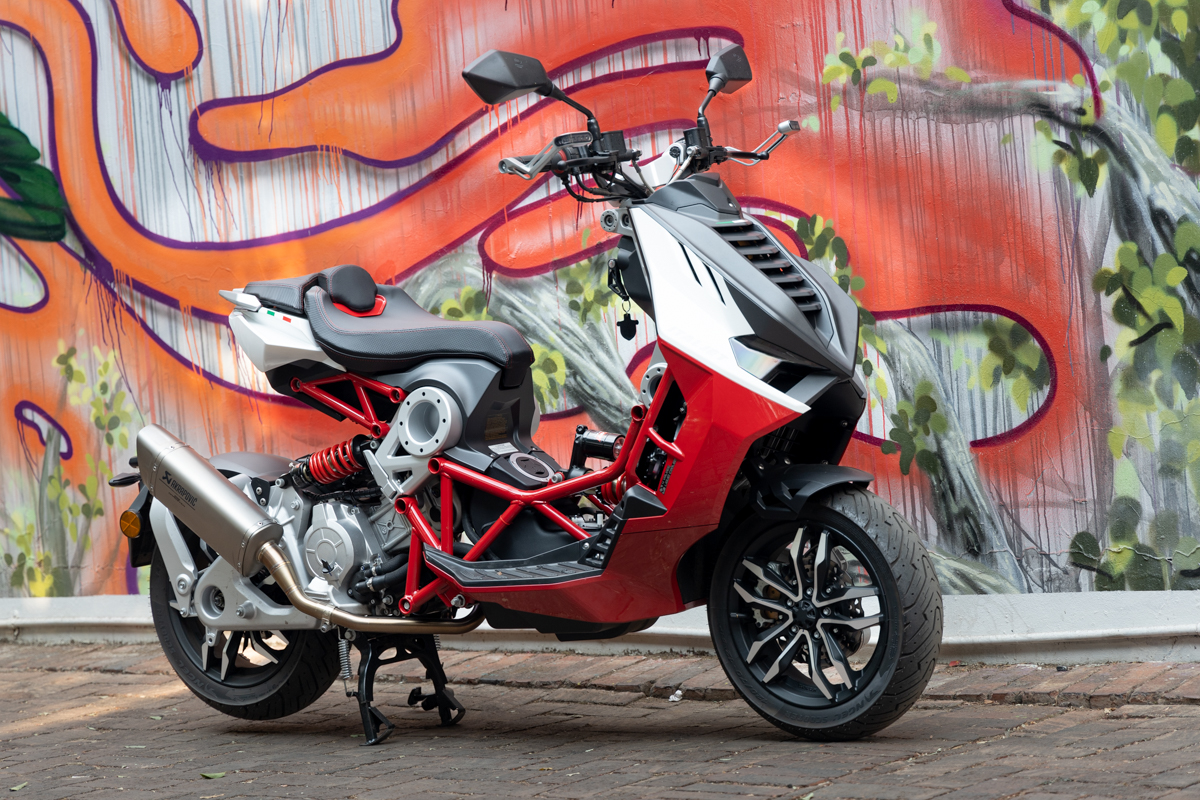
I remember my first encounter with Italjet very well. I grew up in Brits (someone had to), and just off the main street was the Suzuki dealership. They also stocked small Italjet motorcycles, similar to the Yamaha PW 50. One of these bikes was up for grabs in a competition, and I would pray to any deity that cared to listen to make me win the bike. I didn’t, but I would go into this dealership almost every day and imagine myself riding it.
To me, Italjet was that small 50cc bike. But this Italian company has been around since 1959 and is based in Bologna. If you care to delve into their history a bit, they have been making some really innovative bikes. Their design studio also had a hand in the development of Ducati and Triumph models. They even competed in the 125cc MotoGP class from 2000 to 2002 with riders like Leon Haslam and Leon Camier.
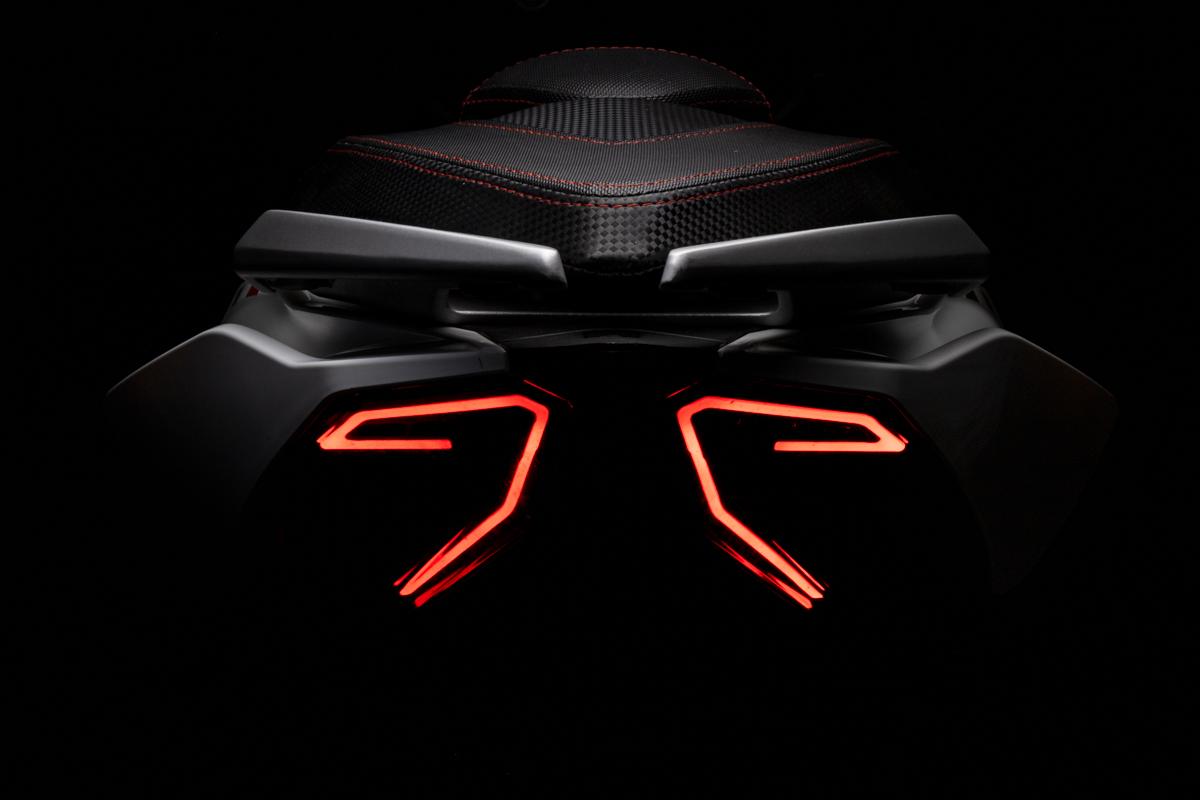
In the late 1990s, Italjet created a scooter called the Dragster. It looked nothing like traditional scooters and became somewhat of a cult classic with its odd-ball design and centre-hub front suspension. Now, many years later, the Dragster has been re-imagined into probably the best-looking scooter available today. I never thought that I would be gushing over a scooter, but the Italjet Dragster is a work of art.
When the first batch of Dragsters landed at Clint’s Scoots in Centurion, I went there to see these beauties being uncrated. The Dragster is available in various colour schemes and my favourite has to be the one with the yellow frame.
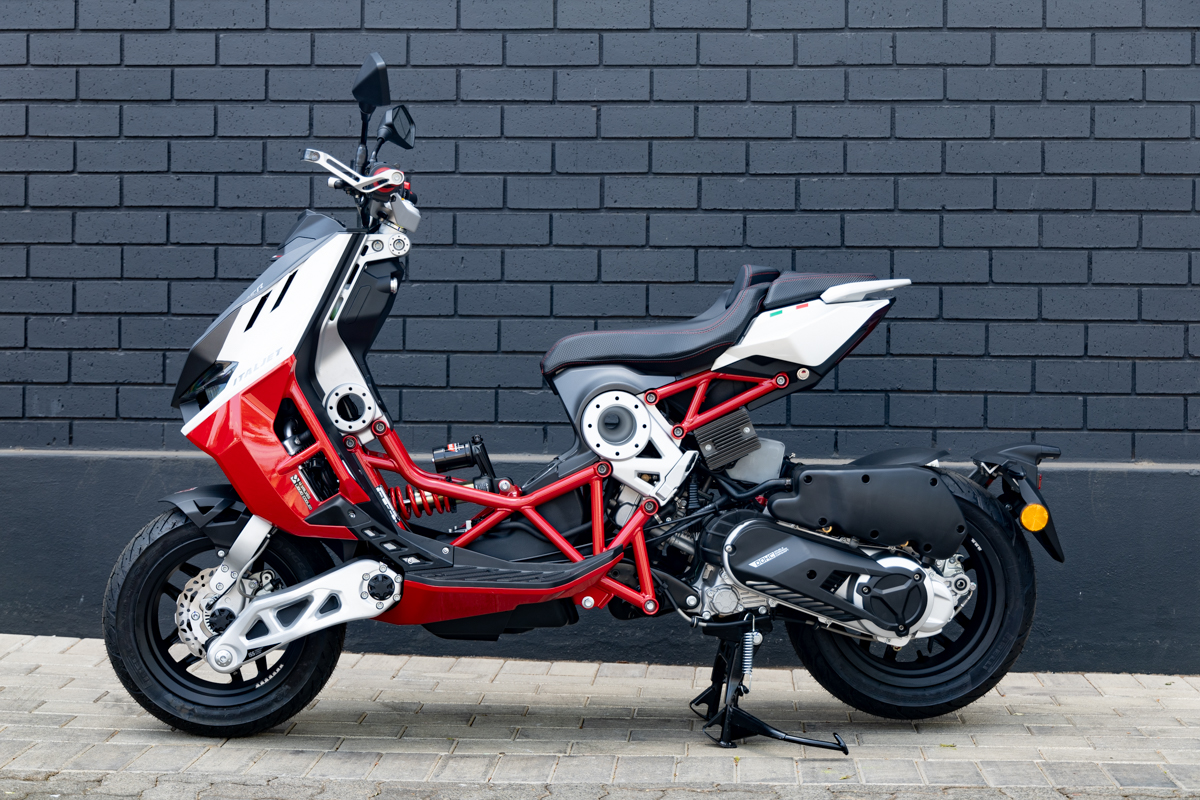
When you look at the Dragster, you can literally see everything. It has an exquisite trellis frame and the unique centre-hub steering is simply brilliant. The petrol tank and all its ancillaries sit low in the frame. Above it sits the front shock absorber. The rear wheels and engine assembly jut out under the seat which is beautifully crafted and stitched in the main colour of the bike.
The passenger seat is tiny, but I doubt Dragster owners will ever carry a pillion. The handlebars have got lever protectors on and they double as indicator holders. Even the key mimics the design of the trellis frame. The engine is water-cooled and the radiators have been neatly incorporated into the front fairing. The rear brake lights remind me of those found on the Ducati Panigale.
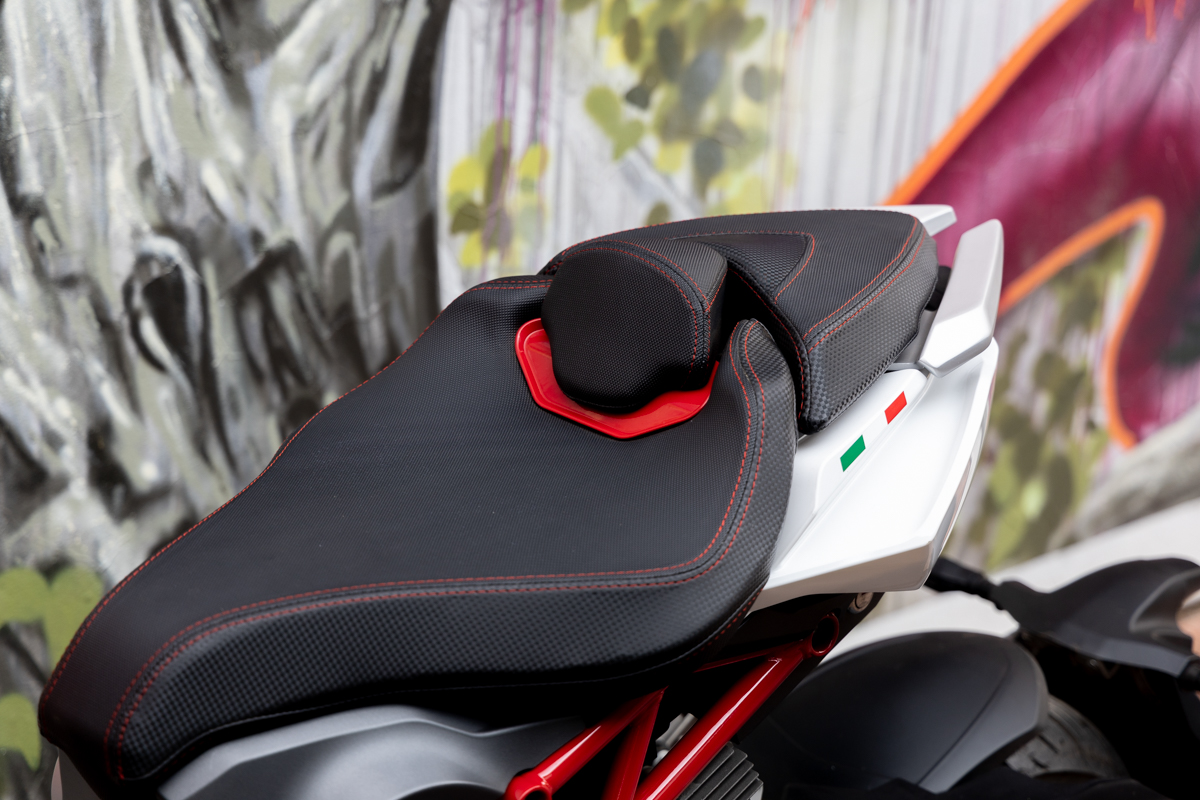
The demo unit had an aftermarket Akrapovic pipe on which made the bike look even more wicked. For someone like me, who loves detail, the Dragster was a sensory overload.
There is a very small cubby under the seat that could hold your cell phone and wallet and not much else. There is a USB socket just next to the ignition, but I would have preferred one under the seat as well.
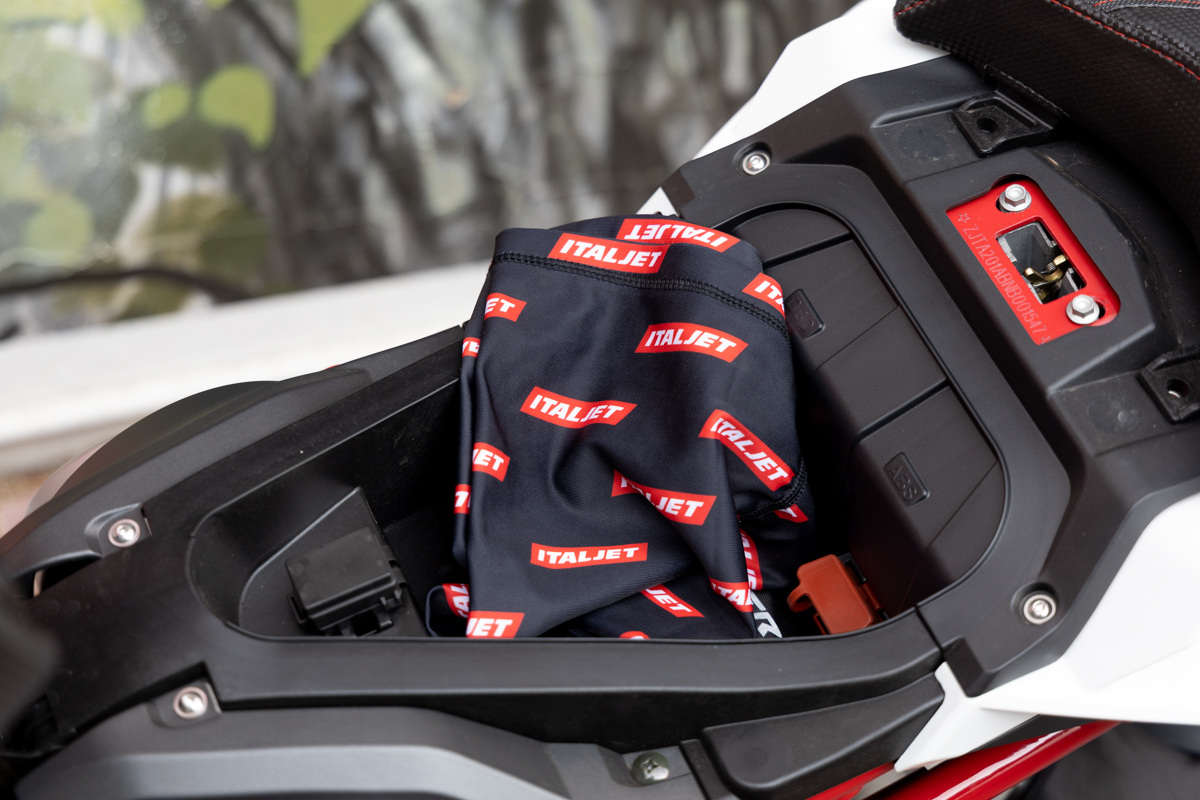
From where you sit, you only have a tiny LCD in front of you. It shows your speed, trip A and B, fuel level and the time. Above that, you only have 4 warning lights: indicators, high beams and an oil pressure warning light. That is it. Very minimal and to the point. The seat is quite comfortable, and although the Dragster has diminutive dimensions, it is not at all a bad place to sit. I for one did not feel cramped.
The original Dragster had a two-stroke engine, but to comply with Euro 5 emissions, the new one has a more sedate four-stroke engine. It is a 181cc, liquid-cooled, fuel-injected unit and produces just shy of 20 hp. In true Italian sport bike tradition, the Dragster is fitted with Brembo brakes and Pirelli tyres. To keep the design simple, the bike has no side stand and only has a main stand.
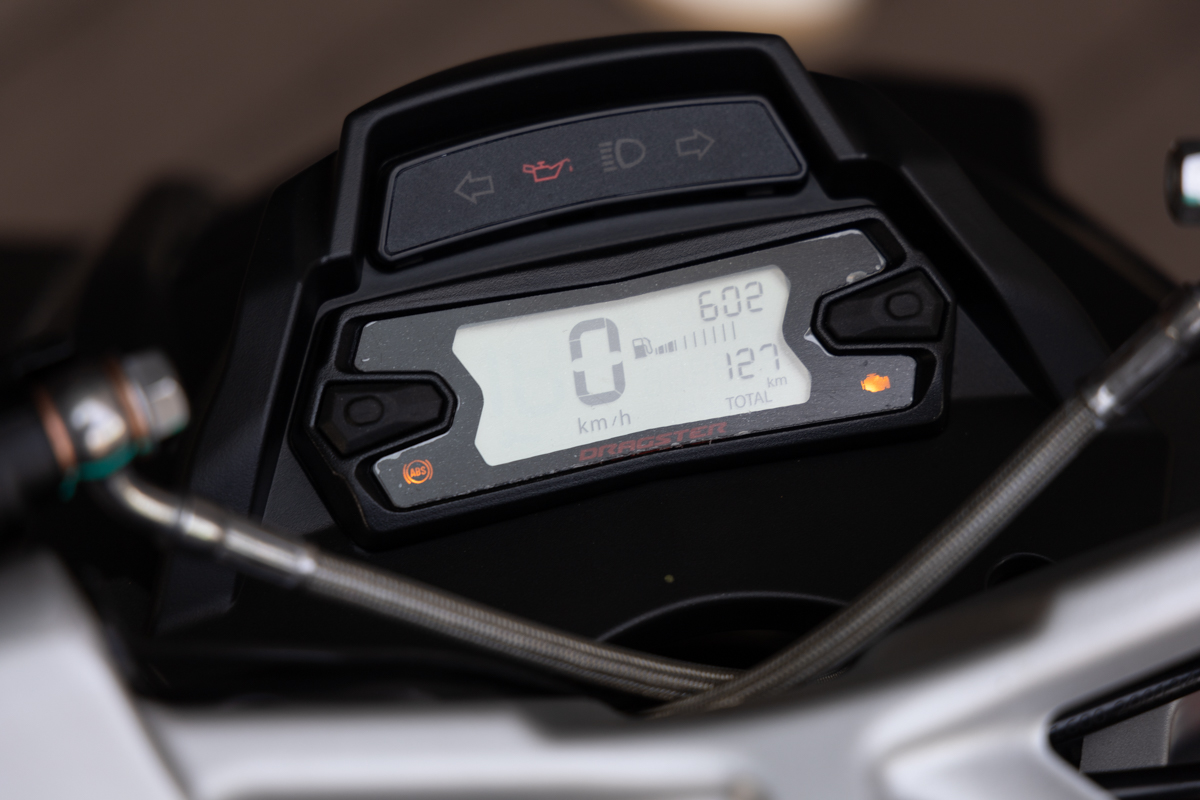
I love scooters and the simplicity of riding them, and the Dragster is no different. You simply twist and go. I have to admit that the bike struggled a bit off the line, but I don’t think the issue is entirely the fault of the Dragster, but rather my own weight. You will probably ride the Dragster with the throttle in only two positions: fully open or fully closed. Even though it feels sluggish off the line, once it hits the 70 km/h mark, the little Italjet comes on strong and really gets going.
My initial fear of riding on the highway was quickly dispelled once I felt the top-end performance. When the Dragster reaches around 100km/h you want to keep it there. That means you dodge traffic and go into corners with the throttle wide open because any speed you scrub off in a corner will have to be made up again. The words that Maverick said to Rooster came to mind: “You don’t think, you just do.”
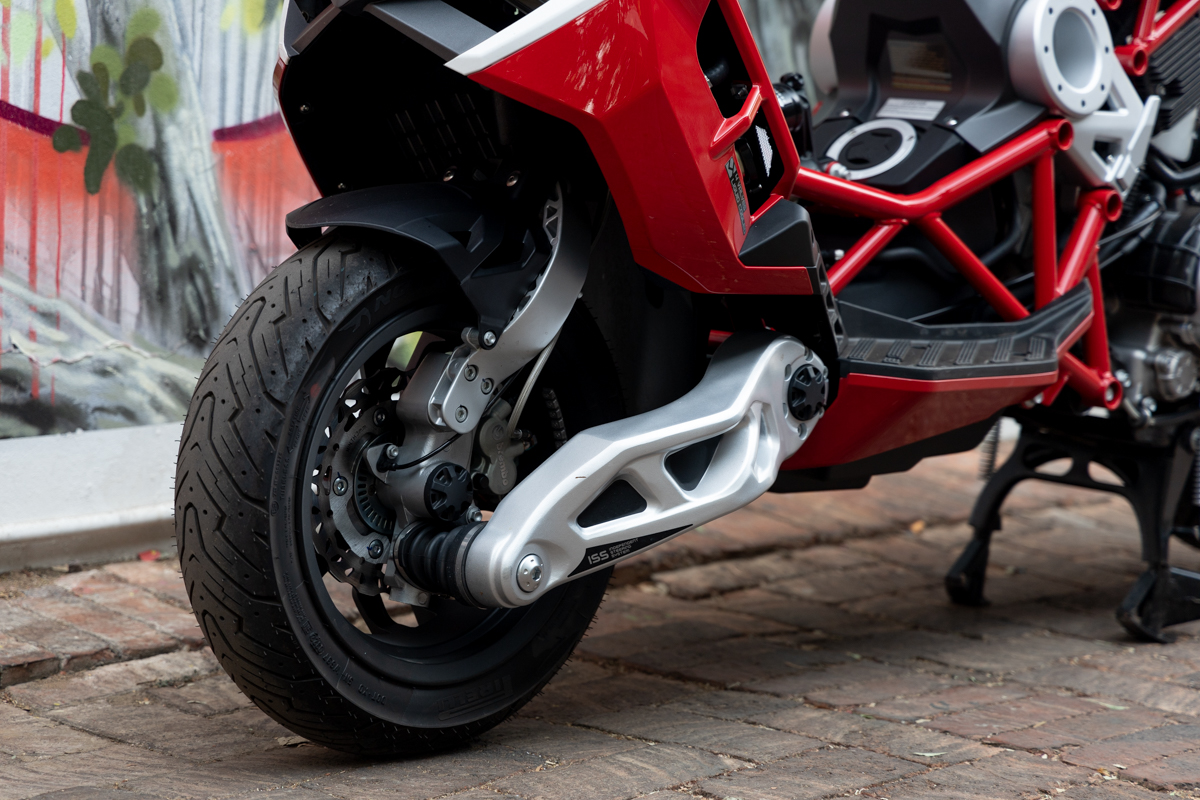
Once you get into the Dragster’s ‘zone’, it is a lot of fun to ride. The chunky tyres grip and the bike is extremely responsive. The Brembos provide great stopping power, but as I said, you want to stay away from them as long as possible. One odd thing I did notice with the fancy front suspension was the lack of dive under braking. The front wiggles a little, but the brakes are fantastic.
What makes the Italjet even more special is the extensive accessories list. From Akrapovic racing exhausts, Öhlins suspension upgrades and carbon fibre bits, the sky is really the limit. The starting price of the Dragster is around R130 000, so adding these accessories will probably push the price into the stratosphere.
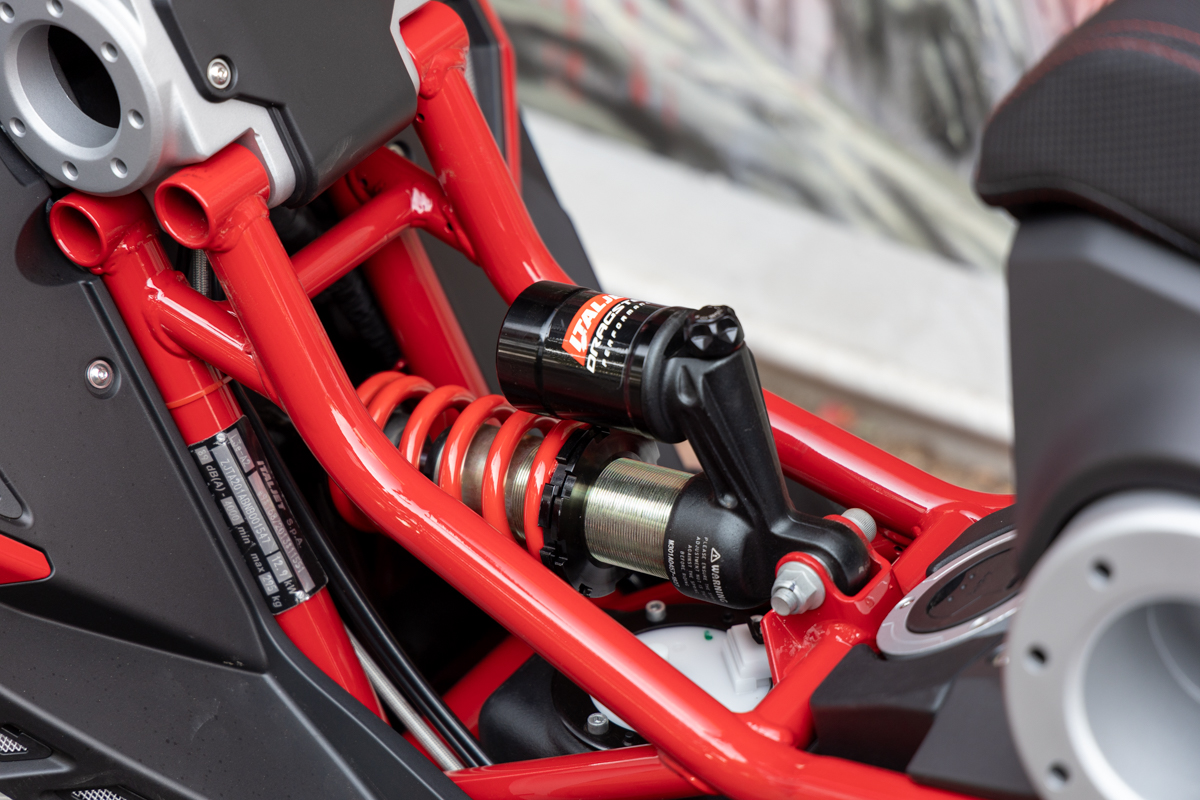
As a scooter then, the Dragster is completely impractical, but I have never wanted a motorcycle more than I want this. This is functional art. It looks fantastic, and even if I just use it for a short ride to a coffee shop or breakfast venue, I will do it every day and enjoy every second of the ride.
So, if you want to see these bikes in the flesh, you can pop down to Clint’s Scoots in Centurion or ScootDr in Cape Town.
